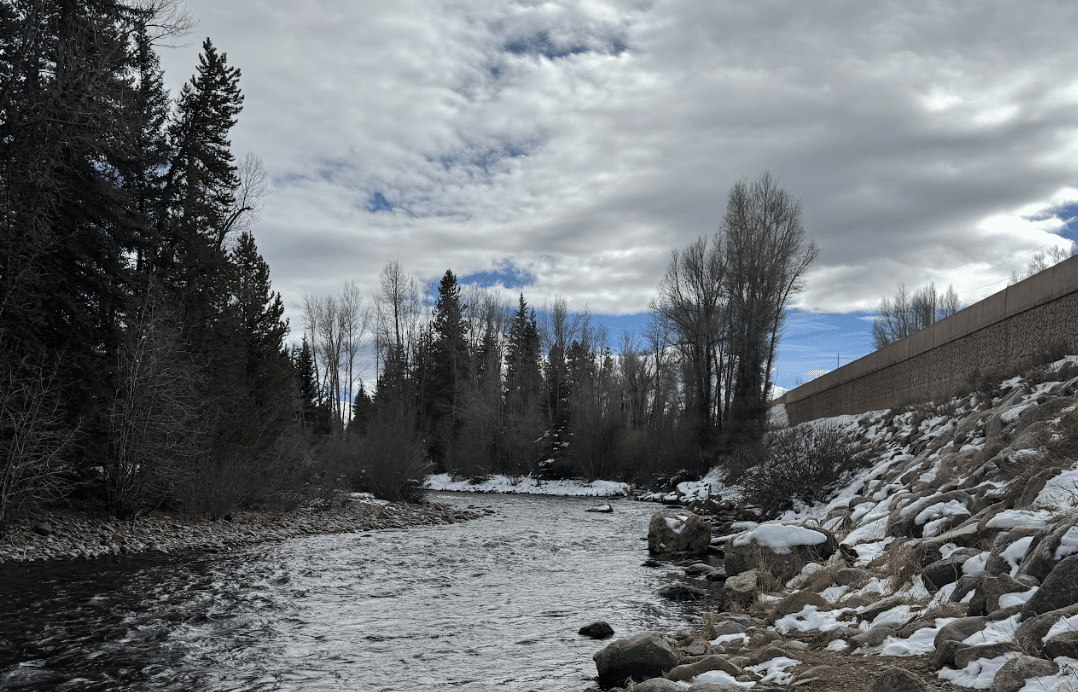Time to Improve Your Angling Skills
If you’ve been outside lately, you can see that winter is quickly approaching. And, in many peoples’ minds, fishing kind of turns off, but I think from an angler’s perspective, that’s when it really turns on from a challenge perspective. In winter, you can really push yourself to become a better angler. I say that because, traditionally, fish get lazy when the water temperatures start to get down. Really lazy. And unless you’re putting it where it needs to be, it just isn’t going to happen for you. It’s prime time to improve your general angling prowess, particularly your water-reading skills, fly selection rationale, and casting technique. Don’t sit on the sidelines during this prime season!
Don’t forget that we’ve reduced our rod fees by a generous 25-30%. These reduced rates make it even more appealing for you to brave the cold and enjoy the exciting challenge of winter fly fishing.
Slow Your Roll in Winter
First things first before we get into the three opportunities for angling improvement. As winter progresses and water temps start going down, one big thing you need to remember is that you probably don’t need to be out there at the crack of dawn. Showing up to the water around 10 o’clock at any of RareWaters properties will be your most productive window. So, check out the local areas where you’ll be fishing and maybe get a good breakfast or some coffee at a local spot and hang out for a little bit. There’s no shame in slow-rolling your day to give yourself the best winter fishing experience.
Reading Water for Winter Fly Fishing
I like to think fish are like humans. They’re going to be lazy. They’re not going to always swim upstream. They will take the easier path to conserve energy on a more limited diet. If you can keep that in mind, that will lead to great success. It has personally.
As a fly angler, reading the water during winter requires careful observation of its features. Understanding the water’s behavior becomes crucial in the colder months. Start by focusing on the slower sections, particularly the deeper pools where fish tend to gather to conserve energy. Fish can settle in and not have to battle all day long, so you can bet on their presence.
Fly Selection for Winter Fly Fishing
The big thing — especially in Colorado — is you will want to look at small bugs. Midges will definitely be your go-to when deciding what you want to present to fish. Here are three of my top suggestions:
Zebra Midge: The Zebra Midge is a simple yet effective fly, perfect for winter fishing in Colorado. Available in various colors, the black and silver variant is particularly successful in mimicking midges in their larval stage.
Mercury Black Beauty: This pattern adds a little extra sparkle to catch the attention of lethargic winter trout. The Mercury Black Beauty is a smaller fly, typically tied on a size 22 hook, and is excellent for mimicking the tiny midges that hatch during winter.
Miracle Midge: A Colorado original, the Miracle Midge is an excellent fly for picky trout. This fly’s red wire and pearl body effectively imitate the gas bubbles that midges produce during their emergence, giving trout a sight they can’t resist.
If you’re in Colorado, you can swing by a local fly shop like Arbor Anglers, Crystal Fly Shop, or Anglers All to pick up the most current recommendations for your particular watershed.
Casting Technique for Winter Fly Fishing
You should adjust your casting technique to account for the passive behaviors. Precision and subtlety become paramount in the winter. Trout are less likely to chase a fly, so your casts must land accurately, and the fly needs to end up as close to the fish as possible. The water often runs clearer in winter, making trout more cautious and easily spooked. Therefore, longer, more delicate casts can be beneficial. Pay careful attention to your line control and slack management, minimizing unnecessary movement that could alarm the fish. Everything moves slower in winter. Remember to slow down your casting rhythm to match the tranquil winter environment.
Putting it All Together
Reading the water to find those feed seams that are down deep, selecting the suitable patterns to cast, and dropping them delicately in a location that requires minimal effort on the fish’s part are the keys to a successful day on the water. In the winter, it’s not difficult to target fish. It’s just about finding the most willing ones and approaching them correctly. Best of luck out there this winter. Stay warm and tight lines!







